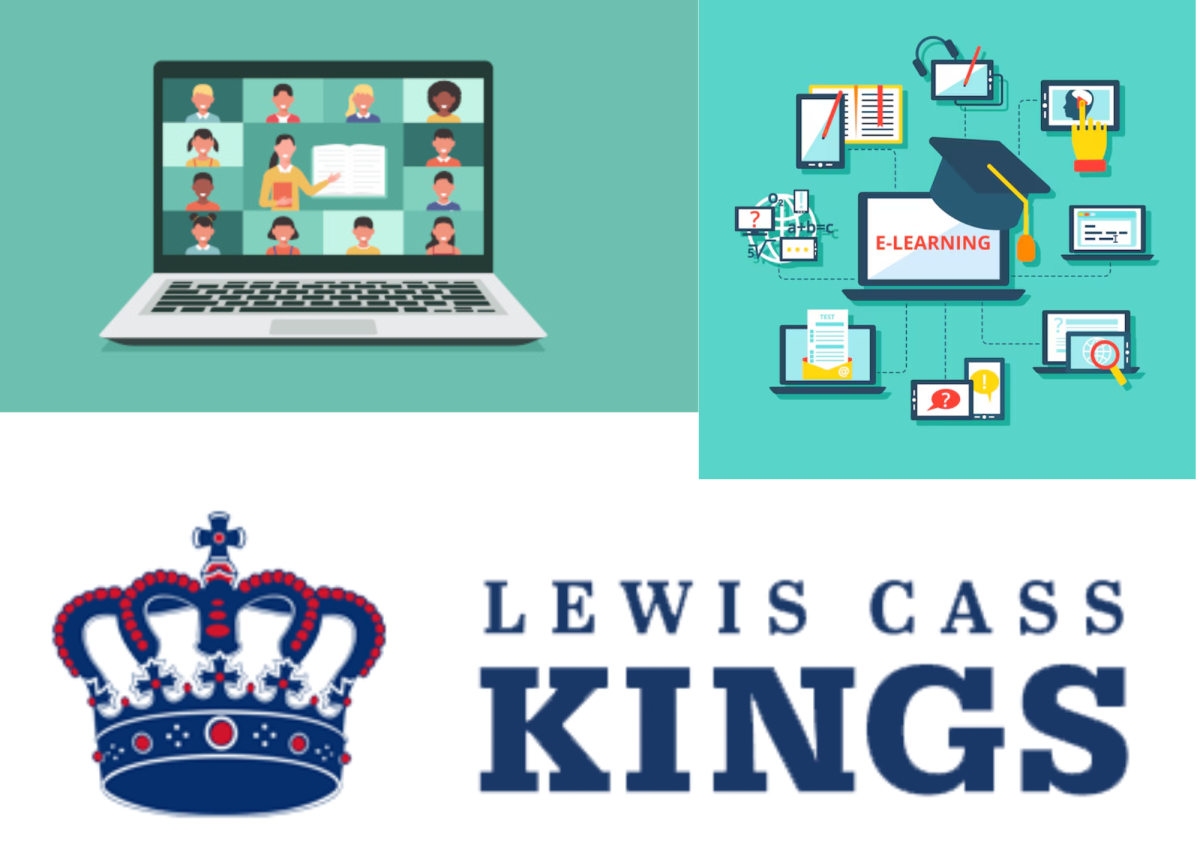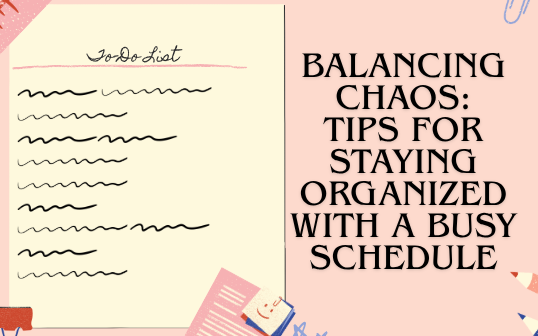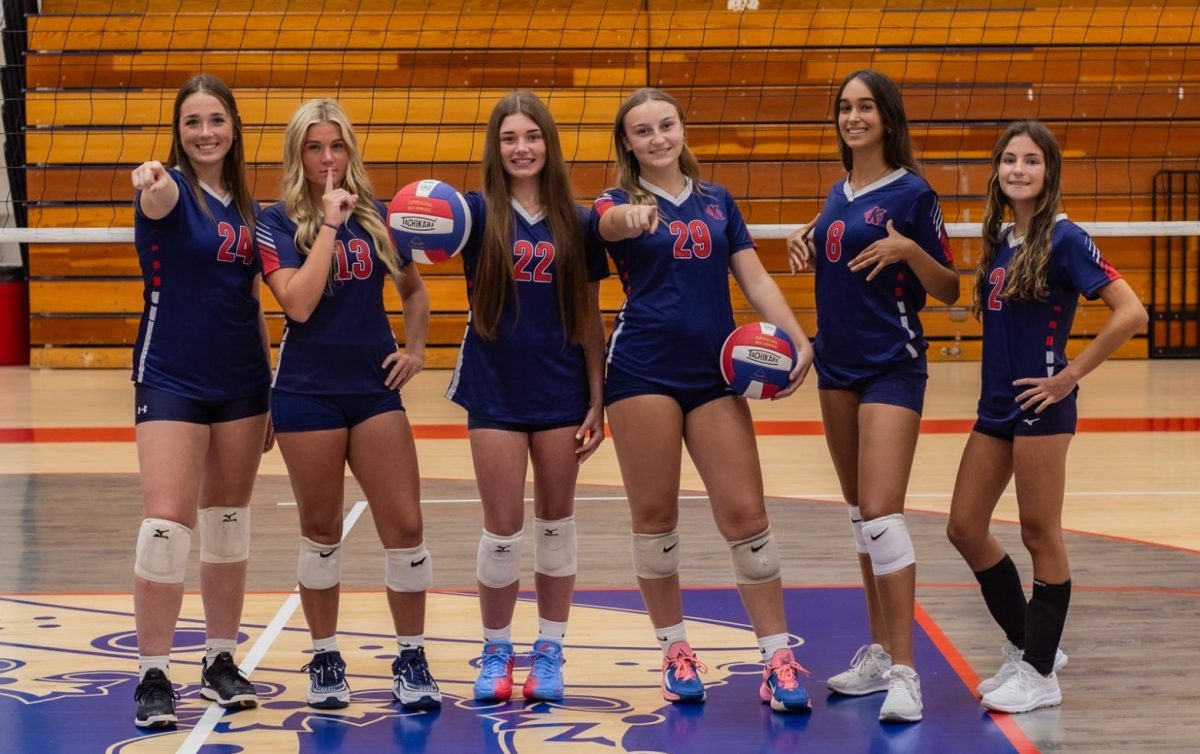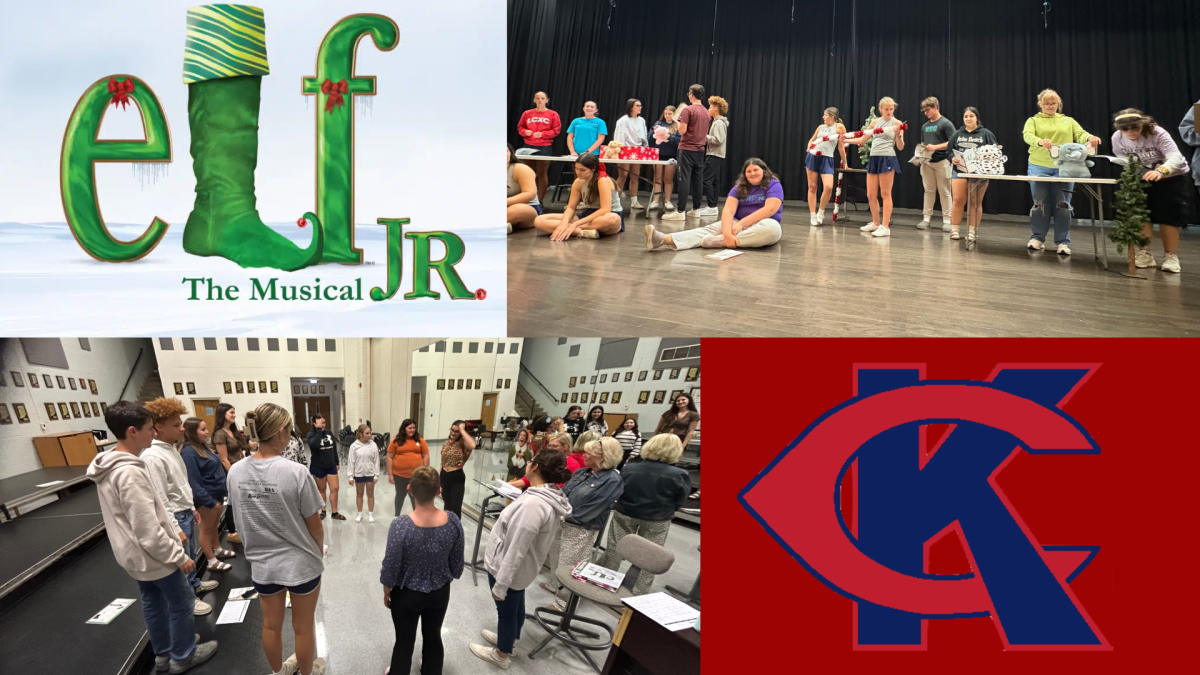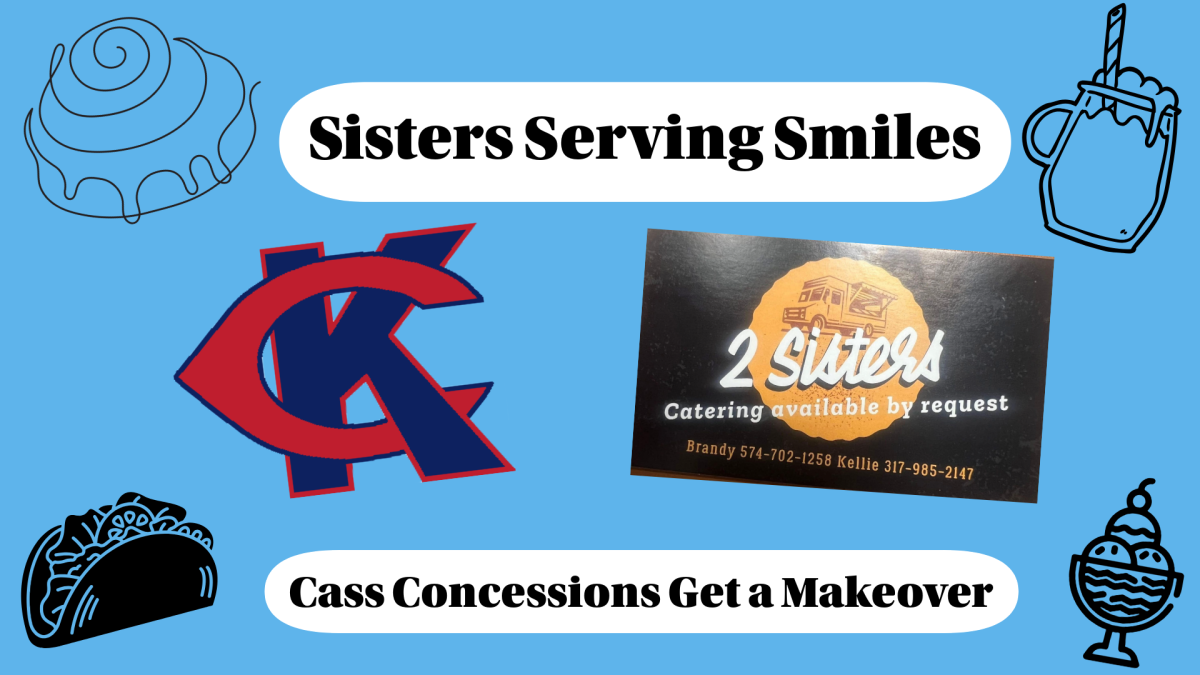Imagine cozily sleeping in your bed, when your parents wake you up to tell you school has been canceled. Many students know this feeling. Recently, multiple schools have been closed or on virtual learning due to the weather. Lewis Cass staff and students were interviewed on whether they prefer virtual or e-learning and what the pros and cons are.
First, math department staff member, Mrs. Barker gave insight on her opinions on virtual versus e-learning. Mrs. Barker prefers virtual learning because she believes there is more, “student engagement and accountability, students have the tendency to show up and do the work that is asked of them”. With virtual learning, Barker is able to continue on with the current lesson whereas with e-learning she is only able to review. But review is not always a bad thing, said Mrs. Barker. e-learning slows down her curriculum, but she thinks that is a benefit for some students. Mrs. Barker feels students learn better in person because the students are more likely to ask questions and get the help they need in school versus having to email and ask her a question.
Next, science department member, Mrs.Cooper, shared her opinions on virtual versus e-learning. Cooper says she does not prefer one over the other, both are even to her. Virtual learning allows her to stay on a schedule better than with e-learning, however, e-learning is a much easier day, “Being able to stay in comfy clothes is a big plus of e-learning,” said Mrs. Cooper. She feels students are more likely to ask her questions on Google Meets or during office hours on virtual days rather than e-learning, and that the extra communication is a benefit of virtual learning. When asked about some of the negatives to virtual and e-learning, Mrs. Cooper said, “I know that there are kids who just set up their computers and then stare at their phone or other electronic device while in a meeting with me, and there isn’t much I can do about it. I can only supervise what is on their computer.”
Olivia Parker, a sophomore at LCHS, said she prefers virtual learning because “I feel like it helps motivate me to get up and get ready for the day.” Olivia believes the benefits of virtual learning are that students can actually discuss and talk through the homework with their teachers, but the downside of virtual is having less time in your classes. Parker thinks the downside to e-learning is students cannot verbally talk to their teachers.
Finally, English department teacher, Mr. Gibson talked about his preferences between e-learning and virtual. If Mr.Gibson had to pick, he would probably choose virtual because he can keep his classes on schedule. When we have cancellations or weather delays, the dates that are set for specific assignments, projects, tests, or anything else have to be switched. Virtual learning helps him not have to adjust days around. Gibson likes that he can give out an assignment, and then check for students’ questions which in turn, leaves him free to work on anything else he needs to. “Let’s be honest, no one wants to be going to school in June, and so having the ability to use virtual days or e-learning days to still have school during bad weather is a huge benefit for that. Students may think they’d rather use that day to sleep in and do nothing, but I bet the vast majority of them would be incredibly annoyed if they had to go to school in June for 5-8 days to make up for all the weather cancellations we would have. I’ll take working from home while it’s -5 out or there’s ice all over the roads in order to enjoy a day where it’s 88 degrees and sunny out instead of being at work!” said Mr.Gibson. He thinks the biggest downside to virtual and e-learning is attendance, and students choosing not to do the assignments. However, the new finals policy is making more students more knowledgeable about virtual attendance, so they do not get counted absent. Still, many students are counted absent or have missed work for that day. Mr.Gibson also talked about how student participation is very low on Google Meet days, which is a problem because there is less class time, thus no time to wait around for student answers.
Overall, there are pros and cons to both virtual, and e-learning, but at the end of the day, going to school in person is the best option for everyone across the board.

